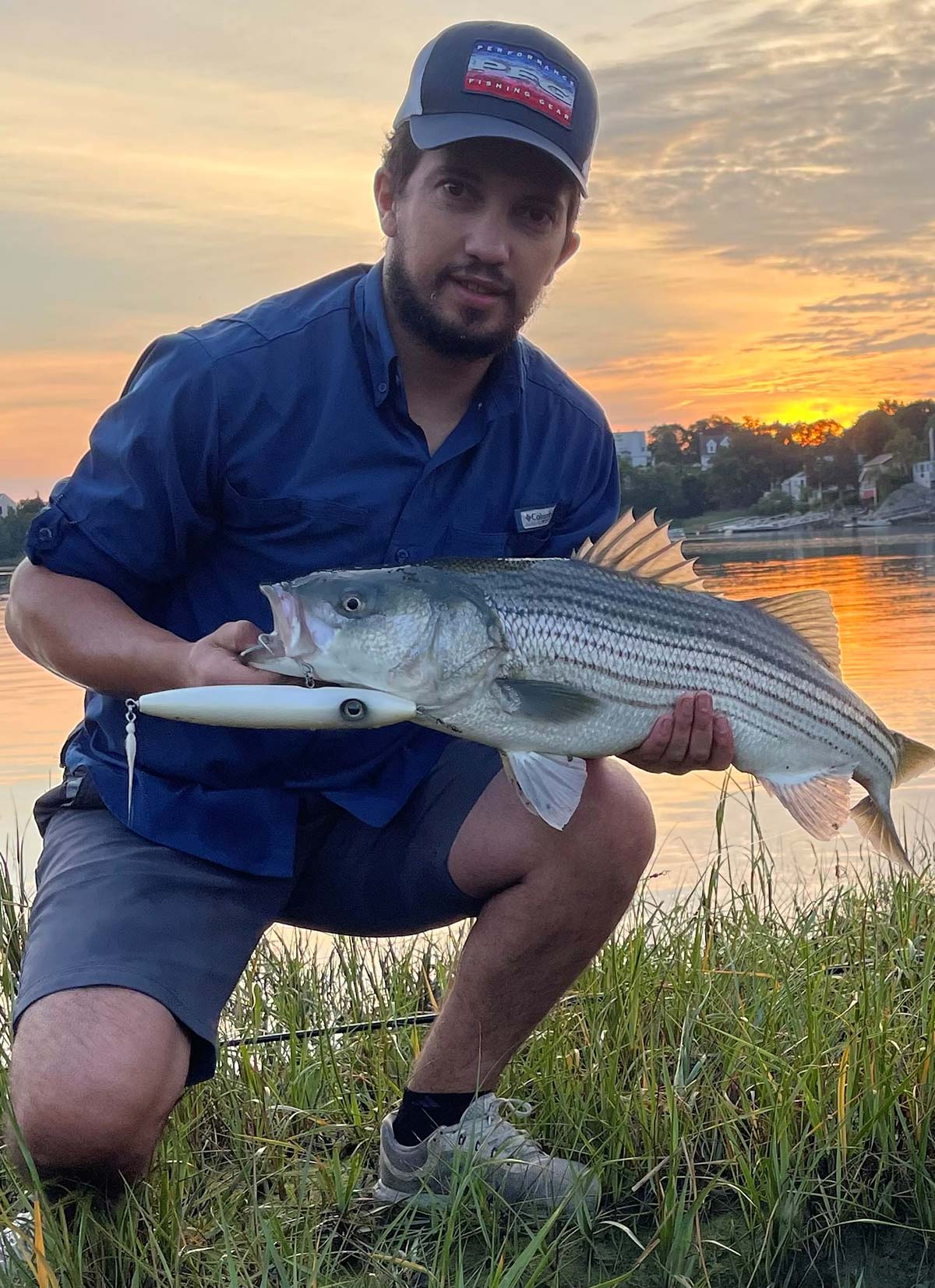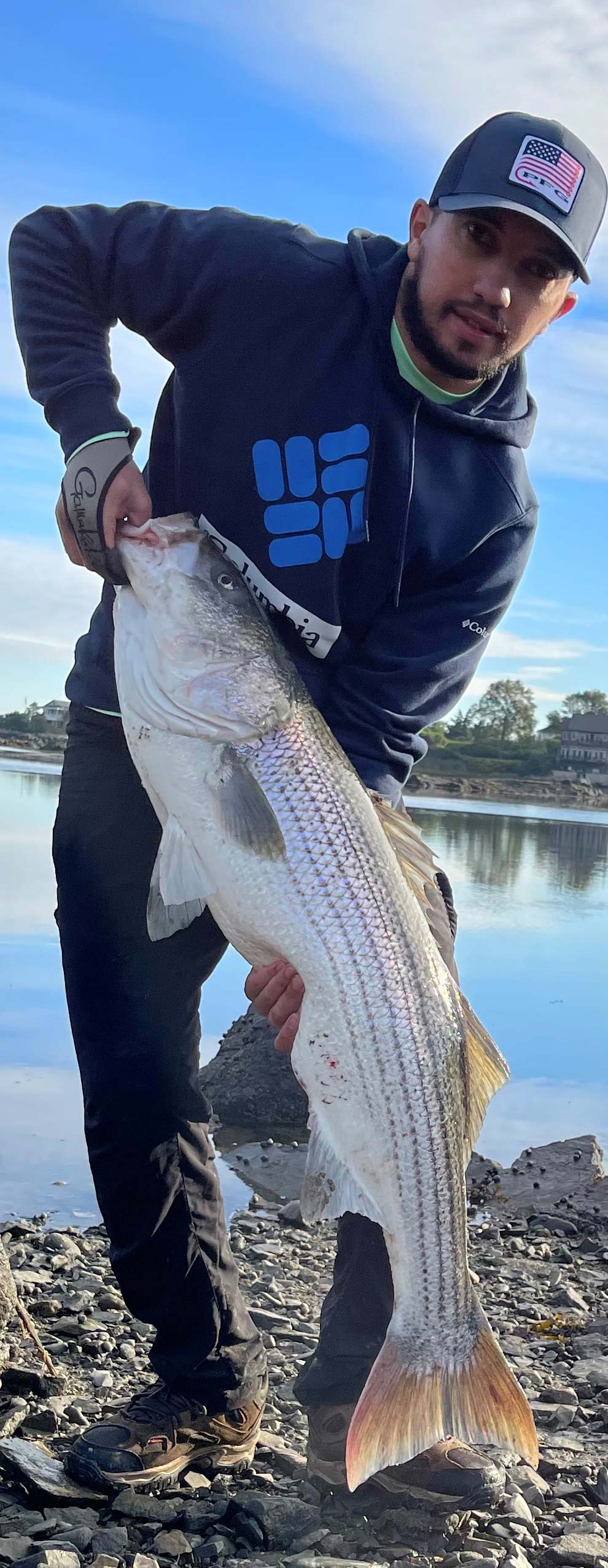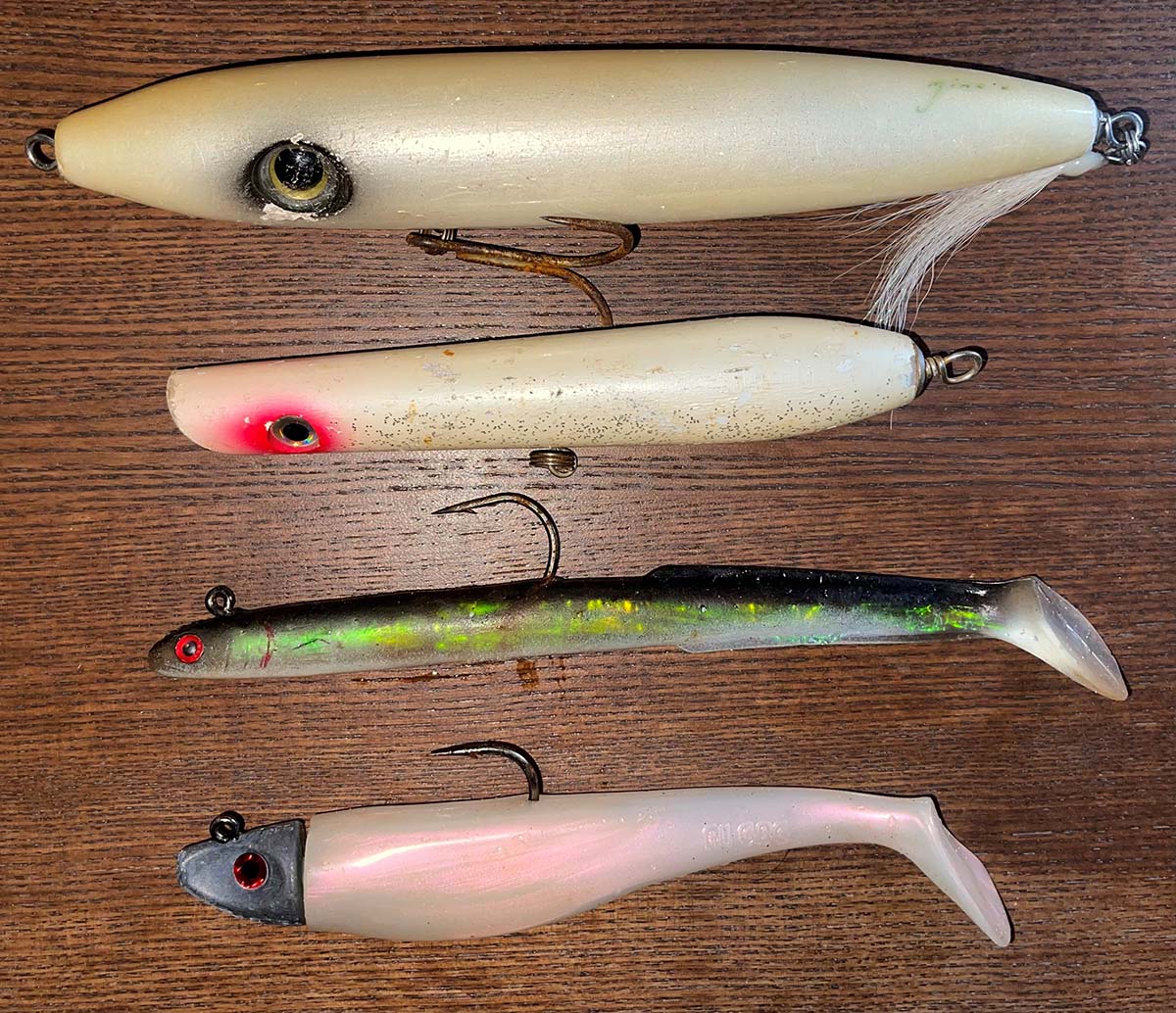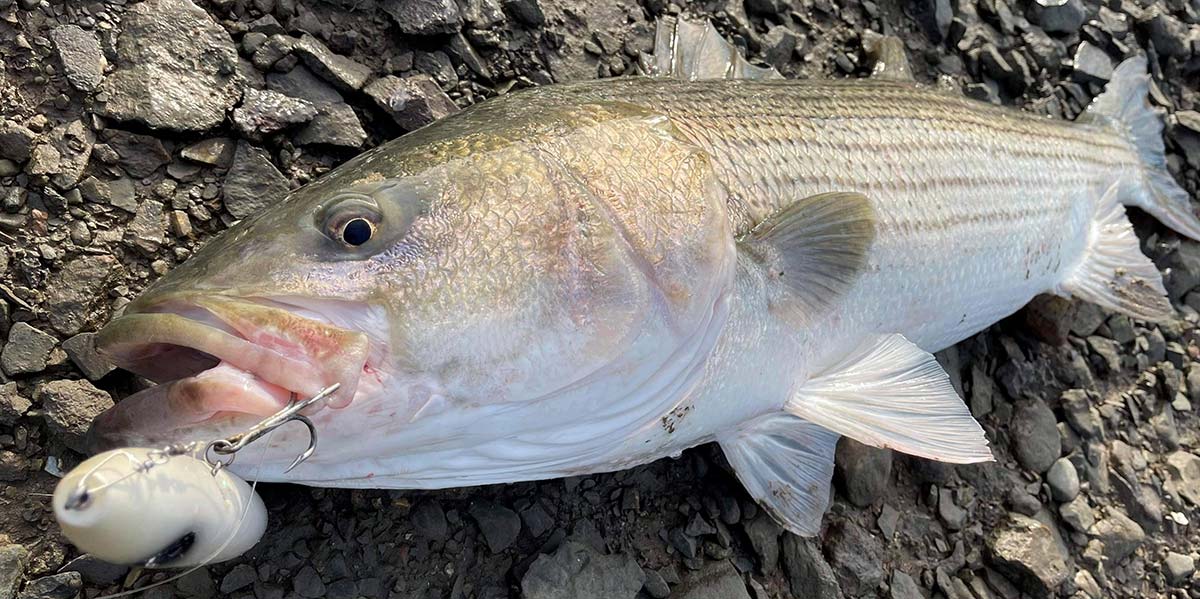
Plugging stripers along Boston’s highway of bass.
Anyone who fishes the estuaries and tributaries of the Massachusetts South Shore, from Quincy to the Cape, knows there are many inlets, rivers and backwaters that hold monster striped bass. The second half of May and all of June represent some of the best times of the year to do just that. Too many surfcasters write off the backwaters as ‘schoolie fishing’, but they couldn’t be more wrong.
One of my favorite memories was when I landed a 42-inch, 30-pound striper on an outgoing tide. I was working with my 9.25-inch Max Spook from Mike’s Custom Plugs. The current was moving fast through the narrowing pass before it opened up and emptied into the Bay. My first cast was against the shoreline, the plug working across the narrow opening, framed with awesome structure; on one side large boulders altered the tidal flow and on the other a wall of rocks. I walked the Max Spook through the current, but nothing came up for a look on that first cast.
I thought for a moment and watched the current; I threw it again but this time along the rock wall and along the edge of the current seam, slowly retrieving it back when I saw the boil, I said to myself, “don’t change your retrieve”, then I saw it bulging up behind the plug again. Seconds later, he nailed it, my reel stopped and the drag starting screaming as he made his way toward the Bay.
My heart raced as the adrenalin rush took hold, I had caught many fish here in the past, but this fish would not give up and continued to run farther into the bay with the tide. I tightened my drag and put more pressure on the fish, the game of back and forth had begun. Finally I had won him over and when I finally saw the fish, I was amazed to see its full length and massive girth! This was the moment when I became obsessed with backwater plugging.

The Learning Curve
For the first few years of plugging these estuarine waters, I set my goals at learning my waters and what to look for to find fish. My friend Randy Chichester played a vital role in my learning process. He showed me a few productive spots and let me in on the timing of these spots as well. This knowledge would prove to be very helpful because it allowed to me to observe them during their prime windows of opportunity. I was able to watch how the current flowed over the bars, how the water slowed in the deep pockets, this gave me the ability to find other productive spots on my own.
Basically Randy is a master of reading the water. He taught me how to look at eddies, how bass use cuts in a sand bar and how the height of the tide plays a role in all this. He also taught me a lot about monitoring water temperature and wind direction and the roles that those variables play in backwater fishing. Not everyone pays attention to water temperature, but he showed me that the fish shut down when the water gets too warm and how they will switch to feeding exclusively during lower light conditions. He also taught me to always look for bait and to read the wind to make the best guesses about how and where the bait would move from one day to the next.
One piece of advice that really helped me is that you want to try your spots at all stages of the tide and during both incoming and outgoing tides, the water reacts differently to the contours of the shore and bottom depending on the direction of the tide. Take note of where the current speeds up and where it slows down, think about how a large bass might set up in the slower water of a deep hole or how it might use faster current to its advantage.

Cover The Spread
It is also important to carry lure options that can cover the whole water column. I rely heavily on topwater plugs and soft plastic swimbaits, but some areas require the use of heavier jigs to bounce along the bottom. Most of these backwaters, between Boston and the Canal, are on the shallower side, but having options to get deep will keep those deep spots honest. I take note of the times and tides that every fish is caught, this has really helped me dial in the timing of each spot. Something that has stood out as a consistent producer across many spots in this area is timing the high or low slack with sunrise or sunset.
I usually start exploring in April, by mid-May the bite is usually on and it often lasts through August. It’s not unusual to have to change locations due to the weather patterns or the bait movement. That is why I find it key to explore and keep track of locations throughout the season. If the water gets too warm, I move further down the south Shore where the water tends to be a few degrees cooler.

The Big Four
When I fish new areas I bring my four confidence plugs and expand from there. My number one is the Max Spook by Mike’s Custom Plugs, I like to cast it into the calm side of current seams. My typical retrieve is a medium-paced dog walk which produces some vicious strikes in these quiet backwaters. If you can’t get your hands on one, try the Big Doc or the Shimano SplashWalk. I also like to use a 7-inch Tsunami Pencil Popper to cover water and fish through faster current. When I want to probe the water column, I use swimbaits such as Al Gags 6-inch, 2-ounce Whip-It Fish or Tsunami Sand Eels.
Like any fisherman, there is no thrill that compares with hooking a big bass on a topwater plug or bouncing a jig through a deep hole. But it is also important to get the fish back into the water as quickly as possible. I have even gone so far as filing or crushing the barbs on my treble hooks. The results have been great, as long as I can keep pressure on the fish I don’t lose them, and removing the hooks happens in seconds. I also make sure my gear is well-suited for the fish I hope to catch, this way I limit the fight time, and I’m not releasing fish that are completely exhausted. I spend so much energy and time finding fish, I would not want to harm the fishery. I believe that as recreational fishermen it is our job and our duty to ensure that this fishery stays viable for future generations and that a sustainable balance in our ecosystem is vital for the future.
It’s a struggle to balance work and fishing during the spring run, I spend more time in the estuaries and rivers than I do in my bed. I wake up three hours early to get out before first light, just to get a few hours in before work. If I strike out, or find a lot of fish, I find myself staying out deep into the night with the hope of feeding my craving for the fight. I am constantly pushing my body to survive work and fishing on less and less sleep, but in the end it is all worth it. The chase, the fight, it’s an endless quest for another adrenaline rush that I can’t seem to satisfy. If you haven’t tried it, make the time and push yourself, the rewards are worth the pain!




